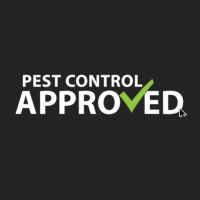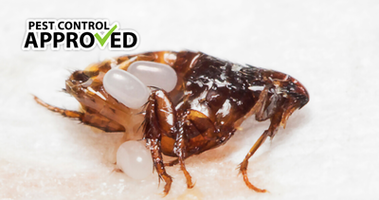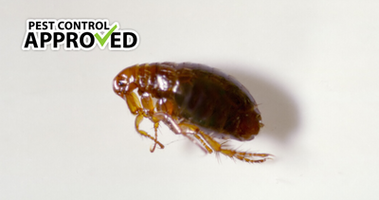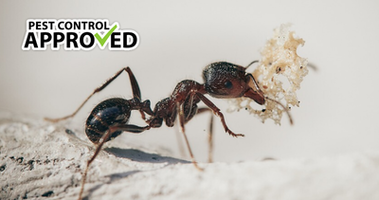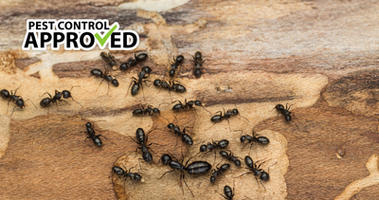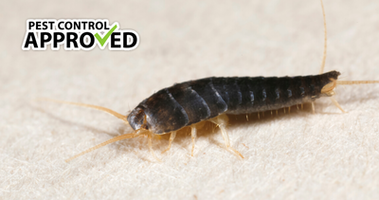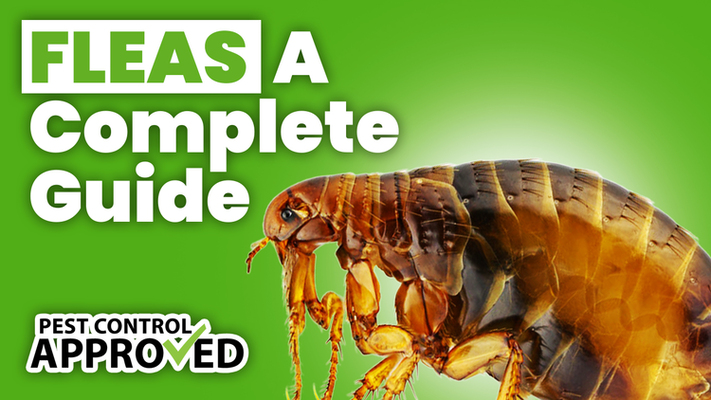
What is a Flea?
Fleas a parasite that is well designed to survive. They are small, wingless, and survive by ingesting the blood from a warm-blooded host. A flea is less than one-eighth of an inch in size, with six legs, a flat body, and no wings. The head of a flea is surrounded by sharp spikes. Their mouth is adept at piercing through the skin of their host.
Because they give birth so abundantly, one single flea can start an infestation in your house. They are most comfortable in warm temperatures when the humidity is high; It is easier to catch them in the summertime. There are over 2,500 flea species, but the one that most impacts humans and animals is the Ctenocephalides felis (cat flea). Fleas have four life stages, which are:
Eggs
The female can lay up to fifty eggs at a time on their host. The eggs hatch between two days to a week after laying in warm and damp environments.
Larva
The larva are translucent and tend to stay hidden in dark areas. They will ingest organic matter like the feces of the adult fleas or dead skin cells.
Pupa
The flea weaves a silken cocoon, where it will remain dormant until it senses that a host is nearby. They can remain dormant for several months.
Adult
The final stage in which the flea. A newly born adult has to eat within a few hours, or it will die. Once they have their first feeding, they can live for a few months without eating. The adult flea’s life is all about eating and reproducing.
A flea generally prefers to feed on pets and other animals but if the infestations are heavy or there are no other hosts available, then fleas will start to feed on humans.
What is a Tick?
A tick is a small arachnid that requires blood meals to complete its life cycle. They have been around at least ninety million years. There are over eight hundred species of ticks, but only two known families of ticks that transmit illnesses or diseases to humans. These are the Argasidae, which is a soft tick and the Ixodidae, the hard tick. The hard tick attaches to a host and can feed for hours or days. The transmission of disease happens near the end of the meal. With the soft tick, they generally feed for less than an hour and the transmission of the disease happens in less than a minute.
What Do Flea Eggs Look Like?
In her short life span, a female flea can give birth to up to five hundred eggs. Each female flea can lay more than thirty eggs each time, so within a week you could have thousands of eggs. These eggs are very hard to spot as they are white to transparent in colour less than 0.5 mm in size. Some people compare them to a grain of salt or dandruff. You will find them on your pet, but unfortunately, as they dry, they do roll off into other areas of the house. It is important to know the difference between the eggs and flea droppings. The eggs do not stick to pet fur, but the flea droppings do.
Signs of a Flea Infestation
It can be easy to identify a flea infestation in pets. Watch your pet for signs of excessive scratching. Some pets will lose hair or have reddened skin from the scratching and biting as they try to relieve the itch. When checking your pets, focus on the neck and head of cats and dog’s hindquarters. Finding fleas on your pet does not always reveal the extent of an infestation. The eggs, pupae, and larvae are hard to see and can also thrive in your yard and house.
Because they are so small, it can be hard to know if your pet has fleas. If you see your pet scratching, you can use a comb to go through your pet’s fur. You are looking for any small brown moving shapes, especially around the tail or ears of your pet. You should also look for ‘flea dirt’, which the fecal matter that they deposit on your pet. It looks like small black specks on their fur and skin. If you try to wipe it off with a damp paper town, the towel will turn red. This is because the fecal matter is mainly ingested blood. It can take two to eight weeks to get rid of an infestation, depending on how bad the infestation is.
Why is it Hard to Get Rid of Fleas?
Fleas are hard to get rid of because of their quick life cycle. Adult fleas are easily killed, but in order to eliminate them, you have to remove all the eggs. In addition to the eggs, you have to also get rid of the larva and pupae. If you have an indoor-outdoor pet, they can bring eggs and adult fleas into the house. It seems as if it is a never-ending battle, but it is possible to prevent or eliminate an infestation.
Fleas in your Bed
Most pet owners allow their pets to get on their bed, and if they have fleas, they fleas will spread to their owners. The fleas will start to bite and suck the blood. The first thing to do is to wash all of the bedding in hot, soapy water. The hot water will kill all the fleas, including the larva and eggs. Putting your mattress in a protective cover will not prevent fleas from getting into your bedding. They do not lay their eggs in mattresses, but prefer the carpets, rugs, and bedding. In addition to continually washing the bedding, you need to treat your pets and frequently vacuum your carpet.
Not only can your bed have fleas in them, so can your pet’s bedding. Always make sure that you are washing their bedding in hot soapy water or dusting it with flea powder and vacuuming it.
Fleas in the Carpet
There are two methods for removing fleas from carpeting. You can use a natural solution like diatomaceous earth (DE), or a pesticide. There are a variety of flea powders, bombs, and sprays to choose from. When you are vacuuming and cleaning your carpets, make sure to move the furniture around to get any eggs, fleas, or larva that may be hiding there.
Chemical Remedies
First, vacuum the carpet to suck up the eggs and fleas. Put a flea killing mixture like a mixture of salt, DE, and borax or commercial flea powder in the vacuum bag to kill fleas. When you are done, seal the bag with tape and dispose of it. If using a bagless vacuum cleaner, place the flea killing powder in the cannister. Wait a couple of hours before you empty it, to give the powder time to kill the fleas. Then wash out the canister with hot soapy water.
If you can, steam clean your carpets with water and borax. If possible, steam clean the furniture. Be aware that you cannot steam clean all types of furniture. You should wash any curtains, pillows, tablecloths, etc. in hot soapy water.
If you plan to use powders, sprays, or bombs, vacuum and steam clean the area first. Flea bombs are no longer considered effective on their own because they fail to reach under furniture or into corners. If using a flea bomb, remove all children and pets from the home prior to use. Also remove any open food dishes, utensils, and cover counter tops and eating surfaces. Most flea bombs are flammable, so turn off all heaters and electricity to the house prior to use. Follow the instructions on the container to activate the bomb and leave the house. Most flea bombs recommend staying away from the house for two hours.
Home Remedies
Set a trap
Put a small dish of soapy water near where your pet sleeps. Put the dish under a nightlight. The fleas be attracted to the warm light and will drown in the water. This only works for adult fleas, but it can help to reduce the flea population.
Homemade Flea Powder
Create a homemade powder for your carpets by mixing a cup of potpourri, half a cup of cornstarch, half cup of baking powder or soda, and twelve drops of citronella or rosemary essential oil. Grind the potpourri until it looks like coffee powder and mix it with the rest of the dry ingredients. Then, add in the essential oils. Put it on a baking tray and let it dry in the air for a day. Put it in an empty shaker and sprinkle it on your carpet. For each one hundred square feet, you will need one cup of the mixture. You can use a brush to spread it evenly around the carpet, bedding, and furniture and let it sit for two to four hours before you vacuum. You should do this every few days until you have the flea infestation under control.
Treating Outdoor Fleas
Nematodes, microscopic worms that eat flea larvae can be used in the yard to help control the flea population. Keep the nematodes in the fridge until use. They will often come mixed in a powder that can be used in water. Put them in a watering can wand pour them in shady, moist spots around the house. Avoid placing them in the bright sunlight as it will kill them. Within twenty-four hours the flea population can be reduced by as much as eighty percent. They multiply quickly so you only have to start with a tiny number.
You can also treat the yard with an adulticide, which will kill the adult fleas. Adulticide should be used in combination with an IGR to kill the eggs and larva. Using both of these is the fastest permanent solution to rid your yard of fleas. Make sure that you concentrate the treatments in the areas that your pet frequents, such as their doghouse. Make sure to apply chemicals to the shaded areas of the yard. It is best to apply them after it has rained.
The larva of the fleas needs shady moist conditions to survive so you can try to bring more sunlight into the area. Watering the yard frequently will also help to eliminate larva. This does not drown them but eliminates their food source. They feed on the feces from the adult fleas, so the watering washes them away.
Getting Rid of Fleas on your Pet
The best solution is to contact your veterinarian and find out what products they recommend. It could be a flea dip, flea collar, spray, or pill. Flea combs are often used as a first step. In addition to treating your pets, you also need to clean the areas where they like to sleep or lay, like rugs, their beds, or blankets.
You can also use Diatomaceous Earth. Rub some on the fur of your pets to help kill the fleas. One of the quickest methods to kill fleas is a flea bath. The medicated shampoo will immediately kill the adult fleas on the animal. However, it only kills the fleas on the pet but does not stop them picking up fleas again.
If your pet does not care for baths, you can use flea drops. Make sure that you get the right product for your pet; different species need different flea drops. Your pet must also be at least twelve weeks old. The drops must be applied directly on the skin for it to work correctly. Usually, it is put between their shoulder blades. Part their hair and apply it on the skin where they cannot reach it. It generally takes twenty-four hours for the fleas to die. You will need to reapply it every four to six weeks.
Flea sprays will quickly kill the adult fleas and offer short term protection from pet re-infestation. The drawback is that they have a strong odor that the pet and owner may find offensive. It takes a few hours for the smell to dissipate. These come in squirt bottles and aerosol cans.
Home Remedies for your Pet
These natural remedies can help eliminate the fleas on your pet, but they will not get rid of the ones in your home. Most of the natural remedies will not kill fleas as pesticides do but they help remove them off your pet. They also make pets smell less appealing to fleas. Adding it to their bathwater will help to drown the fleas on your pet’s skin.
Neem Oil
Add a couple of drops of this organic oil to the pet’s shampoo. You can also put some diluted oil on your hands to massage it into their fur. Since it has a smell that is strong, your dog may roll around trying to get it off. It is not recommended that you use it on your cat.
Apple Cider Vinegar
You can either add some to the bath or put some in the rinse water. You should also use a concentrated rinse of this to dip your pet’s comb in before you comb them.
Dish Soap
Many dish soaps contain surfactant ingredients. Fleas have a waxy coating on their outer shell that is broken down by this type of dish soap. This will make them easier to drown. Add a half teaspoon to one cup of dish soap to the bath and wash your pet well. Leave it on for at least ten minutes before you rinse your pet. Dish soap can be harsh and can break down a pet’s natural oil barrier. You should not use dish soap more than once every thirty days.
Rosemary Flea Dip
Steep two cups of fresh rosemary in boiling water for thirty minutes. Strain the liquid and throw away the leaves. Add the mixture to a jug warm water. When it is cool, pour it over the dog until they are soaked and let dry naturally.
Lemons Spray Repellent
Cut a lemon into fourths and cover with boiling water. Let it sit overnight. In the morning, put it in a spray bottle. Spray your pet behind the ears, under their legs, and around the base of the tail. Be careful not to get it in their eyes.
Preventing Ticks
Home
When you have been in an area that can harbor ticks, always check your clothing. Remove any ticks you have found. You can also tumble your clothes in the dryer for ten minutes on high heat to kill any ticks you might have missed. If you are washing your clothes after being outside, use hot water. Any other temperature water will not kill the ticks. You should also examine your pets and gear such as jackets or backpacks. Make sure that you check your body for ticks; use a mirror to check all areas. Ticks like to get under the arms, inside your belly button, in your hair, and around your waist.
Yard
Using a pesticide can help to reduce the number of ticks in your yard. Always check with the local health department about the best time to apply the pesticide, the regulations, and rules in regard to using pesticides on residential properties, and the best pesticide options. You can also call a professional. Always keep your grass cut, remove any leaf litter, and remove items that give ticks a place to hide such as trash and old furniture.
Pets
Dogs are often are susceptible to tick-borne diseases and tick bites than cats. Talk to your vet about the best tick prevention product to use on your pet. Many times, flea prevention products will take care of the ticks. Make sure that you check your dog routinely for ticks and if you find one, remove it right away. You can also wipe the area where the tick was with a warm cloth.
Human
The higher risk of a tick bite is between April and September. Most ticks can be found in the woods or grassy areas. You can protect yourself by wearing long pants, long sleeve shirts, and using a repellent containing DEET.
Removing a Tick
To remove a tick from you or your pet, use tweezers with a fine tip to grab the tick as close as you can to the skin surface of the host. Once you have a hold of the tick, pull straight up with even steady pressure. Make sure that you do not jerk or twist the tick as this can cause the mouthparts to break off. If this happens, they will remain in the skin. Once you have the tick out, do not crush it with your fingers. You can dispose of it by putting it in alcohol or wrap it tightly in some toilet paper and flush it down the toilet.
Clean the bite area and your hands with rubbing alcohol. You can also use hot water and soap. You do not need to put anything on the bite. If you develop a fever or rash several weeks after removing a tick, you should see your physician.
If you do not have any tweezers, you can remove the tick with your fingers. It is best if you have gloves. Make sure that you wash your hands and the affected area with hot water and soap after removing the tick.
What to Look for on Flea Products:
- Safety precautions on the package.
- A product that eliminate fleas and their eggs.
- Safe around pets and children.
- EPA approved and non-toxic.
Types of Flea Prevention Products
- Flea bombs are generally used to control an infestation of fleas indoors. They are also known as foggers. It is a pressurized canister that when triggered will send out a pesticide to kill the fleas. Put them on the floor on a piece of cardboard or newspaper in the center of the room. It penetrates areas that may be impossible or difficult to reach. Many flea bombs will kill adult fleas but do not kill the larva or eggs. It may take several flea bombs to cover your home.
- Flea sprays/aerosols contain both the IGR (insect growth regulator) and insecticide. They do not need to be mixed before using. This is a convenient way of getting rid of the fleas inside your home. Check the label to be sure but most of them can be used on all floor surfaces. The aerosols are the best choice to use on hard surfaces such as tile, hardwood, or laminate floors. Flea sprays is that they usually last for a month.
- Flea powder is often used for pets. Most powders can be used for pets and carpets, but always read the label. The powder will kill all living fleas within a couple of days. It will continue to work as long as it remains on your pet. If it is not a windy day, the powder should be applied outdoors. Some flea powders should not be used on cats as they frequently lick their fur. The consumption of flea power can cause breathing problems in cats. Pills are the preferred treatment for cats. Flea power can also be used on your pet’s bedding, your carpets, and other areas of the house. Leave it to sit for at least two hours before vacuuming. You can also put it around doors and windowsills to repel fleas.
- Plug-in flea traps or electric flea traps capture adult fleas on a sticky surface. Fleas are attracted by the heat and light of a flea trap and cannot escape its sticky surface. Flea traps alone will not eliminate an active infestation because they only kill the adult fleas. Most flea traps are used in kennels as an early warning sign of flea infestations.
- Diatomaceous Earth (DE)—can be used after you have sanitized your home. It can prevent another infestation. Just put a small amount of this throughout the house. It is an all-natural product made from diatoms, the small fossilized skeletal remains of a unicellular plant. It looks and feels like talcum powder. It has razor-sharp microscopic edges that will cut the protective outer covering of the flea. It easily kills fleas but is harmless to pets and humans. You can put a dusting on the carpet, beneath the stove, near the sink, on the pet’s bedding, and more.
- Insect growth regulator (IGR) can be bought alone or as an ingredient in many flea sprays. It prevents fleas from developing. Some IGRs sterilize the female so no viable eggs are laid.
- Combination flea kits are to be mixed in a pump sprayer and contain flea control products. This product will get rid of flea both inside and outside. It will also target every stage of the flea life cycle. The product contains an IGR to stop reproduction and an insecticide that will kill adult fleas.
When to Call a Professional
Calling a professional is the easiest way to control a flea infestation. If the infestation is especially severe, or you are short on time, hire a professional. Make sure to ask the following questions first.
- How long it will take?
- What will it cost?
- What chemicals are used?
The biggest drawback to using a professional is they use heavy-duty chemicals. These chemicals can leave behind a toxic residue on uncovered surfaces. Therefore, it is important to ask about the chemicals used. Some do use solutions that are less noxious, and you can cover surfaces such as tables and counters to prevent accidentally ingesting the chemical residue. Some professionals use an infrared heat treatment that will kill adult fleas, larvae, and eggs.
If you have a huge yard, then hiring a professional would save you time. They may spray the yard one time or set up a schedule to do it every month from April to September season when fleas are more prominent. Some will hire a professional to spray their yard before the fleas start to become active to help prevent them from becoming a problem.
Flea Bites
A flea bite is a small red bump. There are three or four bites in a straight line. They resemble mosquito bites. There may be a halo around the center of the bite. You will most commonly find flea bites on your ankles and legs. They are often also found around your waist, groin, breasts, armpits, and folds of your knees and elbows.
Symptoms:
- Very itchy
- The skin may become painful and sore around the bite
- You may develop a rash or hives near the bite.
Avoid scratching the bite as it can damage your skin farther. Over the counter anti-itch cream can soothe the itch. Always monitor your flea bites for signs of infection like a rash or blisters with a white top. Contact your doctor right away if you see sign of infection.
Fun Flea Facts
- They can jump vertically seven to eight inches and horizontally fourteen to sixteen inches.
- They can adapt to their environment. With each generation they become more immune and stronger to the commercial flea control chemicals.
- More fleas will live in your pet’s environment than on them.
- For every flea you find on your pet, at least thirty more are living in the house
- One flea can lay from twenty to sixty-five eggs a day.
- The lifespan of a flea is approximately ninety days.
- The cocooned flea can live up to a year without feeding.
- Fleas have a flexible life cycle. They will wait until the best conditions arise to move from one. stage to another. The life cycle will go faster in warm, moist conditions.
- A flea can consume up to fifteen times its body weight in blood each day.
In Conclusion
No matter what method you use to get rid of the fleas, they will return unless you get rid of all of the eggs, larva, and pupae. You will also need to treat your pets. It is a constant struggle to keep fleas under control, but it can be done.
Make sure that you read the entire label of whatever flea prevention product you are using. Some all-natural ingredients are toxic to your pet. One example is d’Limonene, which is from citrus peels and is very toxic to cats. It is found in a lot of natural anti-flea products.
Wash everything, blankets, sheets, pillows, rugs, pet beds, in hot soapy water to kill the eggs. Then you need to vacuum and steam clean all the carpets. You should also vacuum the furniture. You will have to vacuum every day. The rule of thumb when getting rid of and controlling fleas is you should start with treating your pets and then your home and yard.
Pets can be treated with flea baths, drops, or sprays. The best treatment will depend on the pet. Never treat newborn kittens or puppies or pregnant animals. If you are using a flea collar, make sure it is one that is approved by the vet and that it kills multiple pests like ticks and fleas.
The best time to start your flea control program is in late spring before the adult fleas emerge. Use pet treatments during the warm months. Make sure to also use an IGR to keep the flea problem down. Only about five percent of fleas are adults at any given time so make sure that you are targeting all stages of the life cycle. On average, the eggs count for fifty percent, the pupa cocoons ten percent, and the larvae thirty-five percent. Using this formula, it means that for every adult flea that is living on your pet, there are two cocoons, ten eggs, and seven larvae in your house or yard.
Do not wait until the fleas become an infestation. Be proactive and eliminate before this happens. Treat your pet, house, and yard.

